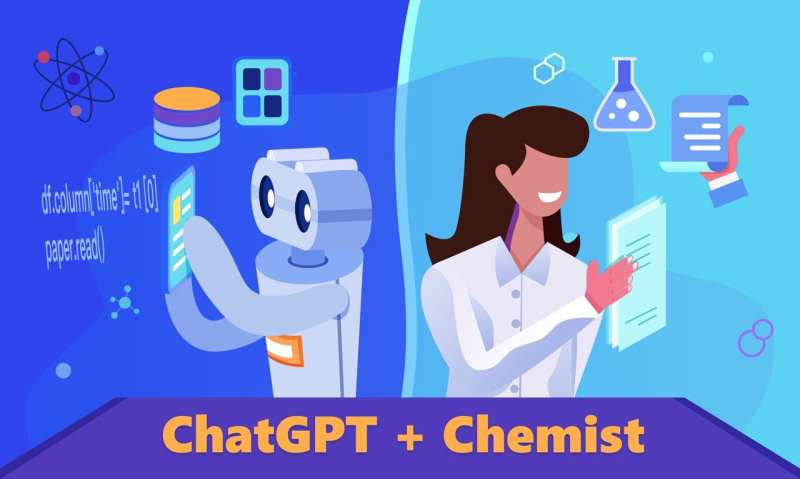This article has been reviewed according to Science X's editorial process and policies. Editors have highlighted the following attributes while ensuring the content's credibility:
fact-checked
peer-reviewed publication
trusted source
proofread
Turning ChatGPT into a 'chemistry assistant'

Developing new materials requires significant time and labor, but some chemists are now hopeful that artificial intelligence (AI) could one day shoulder much of this burden. In a new study in the Journal of the American Chemical Society, a team prompted a popular AI model, ChatGPT, to perform one particularly time-consuming task: searching scientific literature. With that data, they built a second tool, a model to predict experimental results.
Reports from previous studies offer a vast trove of information that chemists need, but finding and parsing the most relevant details can be laborious. For example, those interested in designing highly porous, crystalline metal-organic frameworks (MOFs)—which have potential applications in areas such as clean energy—must sort through hundreds of scientific papers describing a variety of experimental conditions.
Researchers have previously attempted to coax AI to take over this task; however, the language processing models they used required significant technical expertise, and applying them to new topics meant changing the program. Omar Yaghi and colleagues wanted to see if the next generation of language models, which includes ChatGPT, could offer a more accessible, flexible way to extract information.
To analyze text from scientific papers, the team gave ChatGPT prompts, or instructions, guiding it through three processes intended to identify and summarize the experimental information the manuscripts contained. The researchers carefully constructed these prompts to minimize the model's tendency to make up responses, a phenomenon known as hallucination, and to ensure the best responses possible.
When tested on 228 papers describing MOF syntheses, this system extracted more than 26,000 factors relevant for making roughly 800 of these compounds. With these data, the team trained a separate AI model to predict the crystalline state of MOFs based on these conditions.
And finally, to make the data more user friendly, they built a chatbot to answer questions about it. The team notes that, unlike previous AI-based efforts, this one does not require expertise in coding. What's more, scientists can shift its focus simply by adjusting the narrative language in the prompts. This new system, which they dub the "ChatGPT Chemistry Assistant," could also be useful in other fields of chemistry, according to the researchers.
More information: Zhiling Zheng et al, ChatGPT Chemistry Assistant for Text Mining and the Prediction of MOF Synthesis, Journal of the American Chemical Society (2023). DOI: 10.1021/jacs.3c05819
Journal information: Journal of the American Chemical Society
Provided by American Chemical Society





















